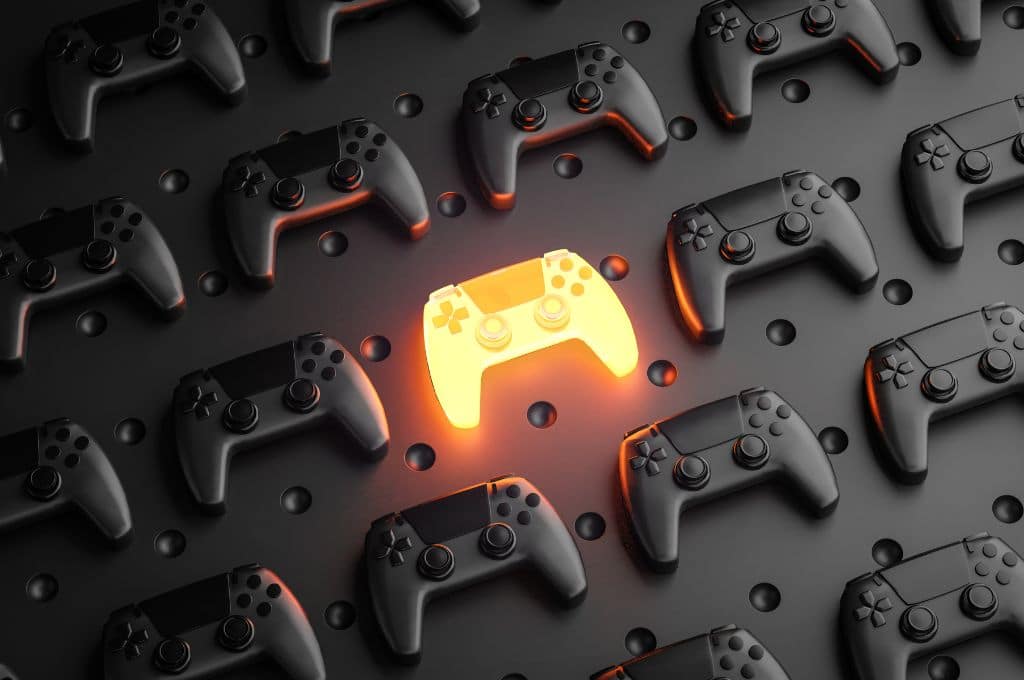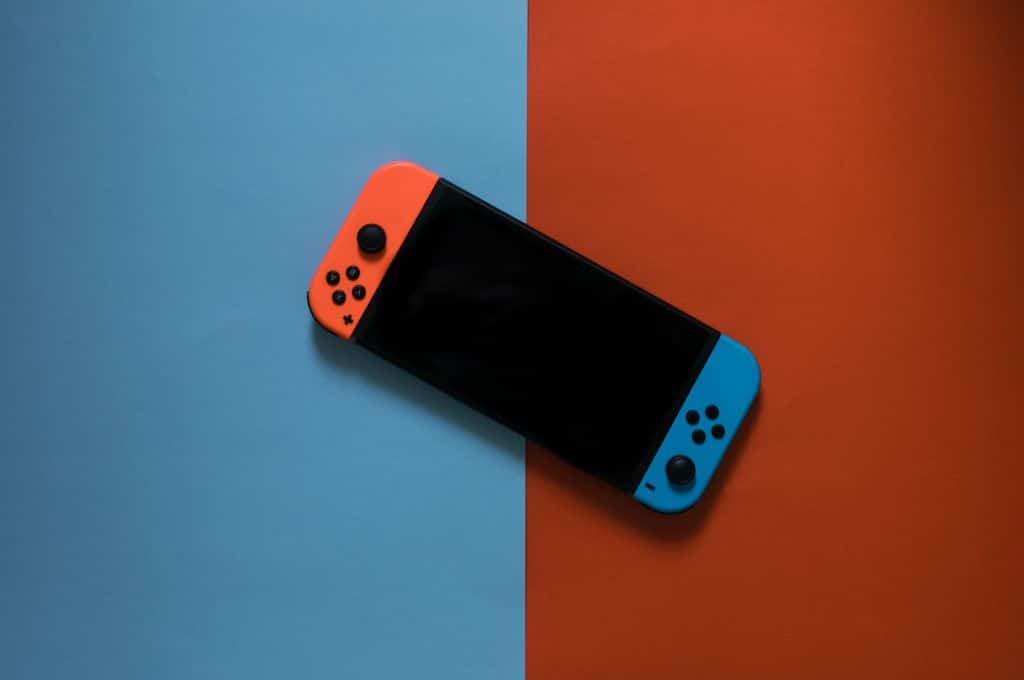

A lot of casual and serious gamers wonder whether or not they can bring their game consoles through TSA security checkpoints and on to the plane. We could be talking PS3, PS4, PS5, Xbox, Nintendo Switch — the list goes on and on.
Luckily, if you want to bring your gaming system on a plane I have some good news for you in this article. Keep reading below to find out everything you need to know about bringing game consoles through airport security and onto a plane.
Table of Contents
Yes, you can bring your game console on a plane but there are some key considerations that you want to think about before doing so.
Tip: Use the free app WalletFlo to help you travel the world for free by finding the best travel credit cards and promotions!

TSA makes it clear that you are allowed to bring your gaming system through TSA security and onto a plane. You can bring your game console as a carry-on item which means that you keep it with you as you head through the TSA security checkpoint or you can bring it in your checked baggage which is what you drop off near the check-in desk.
The best way to travel with your PlayStation, Xbox, and other game consoles on a plane is to bring them as a carry-on.
If you bring your game console to a plane as a carry-on, TSA will essentially treat your console as a laptop.
This means that in many (but not all) cases you will be asked to remove your PlayStation or Xbox from your carry-on bag and place it in a bin so that it could be scanned by the x-ray machine individually. This also means that you will need to separate any of your wires, controllers, and game discs from your console.
Tip: Because your game console will be pretty big, it will probably be easiest to put your console in a bin by itself and then put your other items like cables and controllers in a separate bin.
A few things to consider here.
First, if you have TSA Pre-Check you may be able to just keep your console in your backpack and not have to hassle with taking it out with all of the wires.
With Pre-Check you often only have to pass through a traditional metal detector (as opposed to the invasive full-body scanners) and you also get to enjoy the following benefits:
It’s possible a TSA agent may want to take a closer look at your system and possibly swab it for traces of explosives. This will definitely be the case if you get hit with SSSS.

If you decide to bring your console as a carry-on I would suggest fitting it in a backpack or bag that has a sleeve or compartment where the console can fit snugly.
You want the fit to be snug enough so that the console does not bounce around in your bag but not too tight to where it is an issue taking it out for the security checkpoint.
Some people get dedicated bags like this PS4 bag to transport their console in. Also, here is an example of a PS5 backpack carrier.
That is a great way to find a nice fit but advertising that you are walking around with an expensive gaming system may not always be a great idea. So something more discrete like this PS5 bag would probably be better.
Also, make sure that you separate all of your gaming items before heading through security so that you can easily get through security without holding up the line. Avoid wrapping your wires around your console or any other storage techniques that would slow things down.
You also want to keep a close eye on your console. You will probably have to head through a full body scanner while your console makes its way through an x-ray machine.
While rare, it is possible for items to get lost or stolen at security checkpoints during this process so try to keep as close of an eye as you can on your valuable electronics.
Some airlines have size or weight restrictions when it comes to your carry-on. For example on JetBlue, each passenger can bring one carry-on that must not exceed:
According to Verge, the PS5 is approximately 390mm (15.4 inches) tall, 260mm (10.24 inches) deep and 104mm (4.09 inches) wide. So your PS5, Xbox, or other common gaming system will be able to fit in these carry-on limits but if you have a lot of additional items or a very bulky bag, it’s possible that you could exceed the limit.
A lot of airlines are not super strict about the carry-on size and weight as long as it is small enough to fit in the overhead storage bin or under your seat.
But every now and again you may run into an agent who will measure your carry-on bag to make sure that it complies with the limitations. If it is too big, the agent will force you to check your bag which means that you will have to run the risk of your console getting damaged.
This is one reason you might at first consider placing your controllers in your checked baggage. The problem with this is that many controllers have lithium batteries which are prohibited in checked baggage. This is also the case with certain Nintendo products as well.
Therefore, I would avoid transporting video game controllers and small game consoles in your checked baggage.
So a better plan of action might be to carry them in your personal item, such as a backpack. Unless you have purchased a basic economy ticket or you are flying with a low budget carrier, you will be able to bring on a carry-on bag plus a personal item. The carry-on bag is typically a luggage bag or some sort of duffel bag while the personal item can be a backpack (usually on the smaller side but not always).
Your console could technically count as a personal item by itself (not inside a bag or case). You will need to make sure that it will fit under your seat, though. I would try to avoid walking around with the console without a bag or case because you could damage it and also call a lot of attention to yourself.
Remember that some airlines like Spirit and Frontier do not allow you to bring a carry-on item for free. So if you want to bring your console on a flight with them expect to pay up extra cash to make that happen.

If you are traveling at an international airport it is possible that the security agents may want to apply more scrutiny to your luggage if they discover that you have a large electronic item.
This is similar to traveling with a drone — your bulky console is just something that catches the attention of security more often.
They may want to swab your device for traces of explosives and closely inspect other items in your bag but if you have nothing to hide this should be a pretty painless process.
You can also take your gaming console on a plane by leaving it in your checked baggage.
This is NOT recommended for a couple of reasons.
Baggage handlers are not the most graceful when it comes to handling your checked baggage. So if you do decide to transport it in your checked baggage, do your best to wrap it with a lot of bubblewrap, foam or something similar to prevent damage.
The other reason is theft. While it is rare, some items do go missing from time to time after being dropped off with an airline.
A lot of these items tend to be expensive electronics such as cameras, tablets, etc. A gaming system could definitely fall into this category although some of them are quite large and would be more difficult for an agent to steal.
If you keep the gaming system with you the entire time as a carry-on you never have to run the risk of someone stealing it while you are away from it which gives a lot of passengers peace of mind.

Some gamers may want to take things to the next level and power up their gaming console while on the plane. This is not a very good idea because of the power outlets capacity.
Most power systems on airplanes are limited to 75 watts of power per seat. If you wanted to play one of your PS5 games while on a plane you would need more than 140 watts of power. So trying to get your gaming fix while on the plane is not very feasible with large consoles.
However, if you have something like a Nintendo Switch or Nintendo Switch Lite you should be able to play that on the plane no problem.
And in case you weren’t aware, airlines like United won’t allow you to plug in your own TV — you’ll have to settle for the seatback entertainment.

Yes, you are allowed to bring your controllers as a carry-on item.
Can I plug in my console on the plane?The amount of power needed by a gaming console for active playing exceeds the limits usually available by the power outlets. So while you may be able to plug in your console it is not a good idea in a lot of cases. Some airlines also may prohibit you from plugging in a large electronic device such as a video game console.
What game consoles are allowed on planes?Some of the common game consoles that are allowed on planes include:
Xbox One
Xbox 360
Nintendo Switch
PlayStation 3
PlayStation 4
PlayStation 5
Super Nintendo
Nintendo Wii
If your console has a game inside it, you can still get it through security but I would recommend removing the game and transporting it in a separate case if possible. This will also help prevent your disc from getting scratched.
Can you play Nintendo Switch on a plane?Yes, you can play a Nintendo Switch on a plane.
Can you bring CDs on a plane?Yes, you can bring CDs, including CD games, on a plane.
TSA is very clear that you are allowed to bring gaming consoles through airport security or in your checked baggage. My advice would to always bring it as a carry-on and to pack it in such a way that it can be easily removed from your bag without being a tangled mess of wires and controllers.
Daniel Gillaspia is the Founder of UponArriving.com and the credit card app, WalletFlo. He is a former attorney turned travel expert covering destinations along with TSA, airline, and hotel policies. Since 2014, his content has been featured in publications such as National Geographic, Smithsonian Magazine, and CNBC. Read my bio.